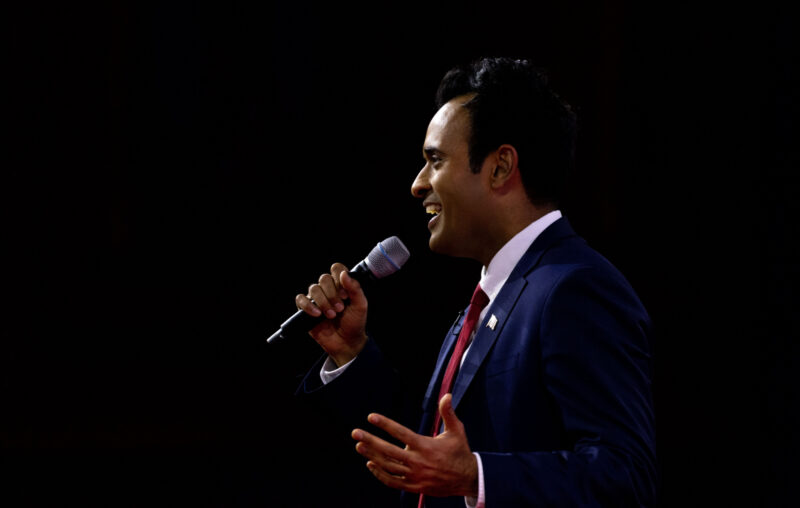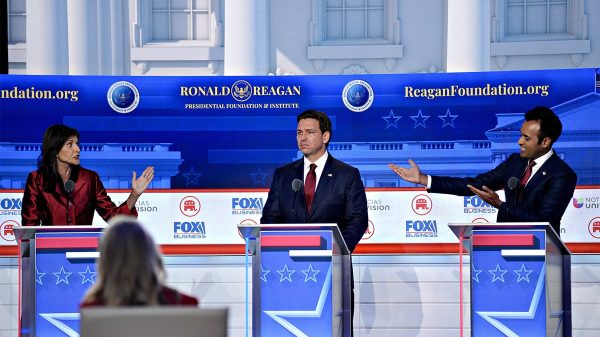
Vivek Ramaswamy, investor and declared Republican presidential candidate, proposes ambitious Federal Reserve reforms in the pages of the Wall Street Journal. He promises to “[preserve] the US dollar as a stable financial unit to help prevent financial crises and restore robust economic growth.”
Purchasing power stability is all well and good, and there’s a strong economic case for it. Unfortunately, Ramaswamy’s arguments reveal he is unfamiliar with the ins and outs of monetary policy. His suggestions are poorly motivated and won’t result in a stronger economy. He’ll need to do better if he wants to rein in the Fed.
Ramaswamy makes three main errors. First, he wrongly suggests the Fed shouldn’t concern itself with business cycles. Putting aside the bizarre suggestion that America’s central bank only started concerning itself with trade fluctuations “beginning in the late 1990s,” Ramaswamy misses the basic point of monetary policy. The only thing a central bank in a fiat money economy can accomplish is demand-side stabilization. The Fed should absolutely push back against fluctuations in output, employment, and inflation caused by aggregate demand swings. Perhaps he wants the Fed to do so in a more predictable manner, subject to the discipline of a strict rule. If so, I agree. But we don’t need to obscure the central bank’s comparative advantage to accomplish this.
Even more concerning, Ramaswamy downplays the potential economic damage caused by prolonged aggregate demand failures. “Business cycles serve a healthy function by transferring the assets and employees of poorly run companies to more capable management,” he contends. No. There is frequently a malinvestment component to business cycles, but what economists call the “secondary deflation” — i.e., prolonged periods of falling nominal income — are distinct from the allocative problems caused by unsustainable investments. Ramaswamy’s understanding of business cycles is pretty obviously falsified by the 1930s.
Second, Ramaswamy focuses on dollar stabilization for the wrong reasons. “A crucial benefit of a stable dollar is that it maintains the balance between debtors and creditors. A sudden change in that balance is the essence of a financial crisis,” he writes. Again, incorrect. Unexpected inflation or deflation can redistribute resources between creditors and debtors, but this allocative effect is small potatoes compared to nominal spending (aggregate demand) deficiencies. It wasn’t dollar depreciation that set the stage for the 2008 financial crisis. It was tight money. Dollar stabilization is desirable primarily because it prevents big swings in economy-wide performance. The benefits in terms of creditor and debtors investing fewer resources in trying to out-guess the Fed is trivial in comparison to the benefits of keeping the economy strong.
Third, Ramaswamy underrates the importance of consumer goods prices for stabilizing the dollar. He believes focusing on the CPI or PCE mistakenly “assumes that consumption drives the economy, when production is what really does. And production is best facilitated when the dollar is stable in real time, not when a lagging index of sampled consumer prices says it is.” But production is undertaken on the expectation of consumption. Producers’ estimates of consumer goods prices determine what they’re willing to pay for labor, capital, and natural resources. The reason we care about consumer goods prices isn’t because we’re privileging consumption over production. We’re trying to maintain the best information environment possible, so producers can make accurate forecasts about the profitability of various lines of economic activity.
“I intend to make the 2024 presidential race in part a referendum on the proper role of our central bank,” Ramaswamy assures us. If so, he has his work cut out for him. These are not minor errors. The President appoints members of the Fed’s board of governors and can influence the Fed through public exhortations and private pressure. The stakes are too high to wave off these obvious mistakes.






















